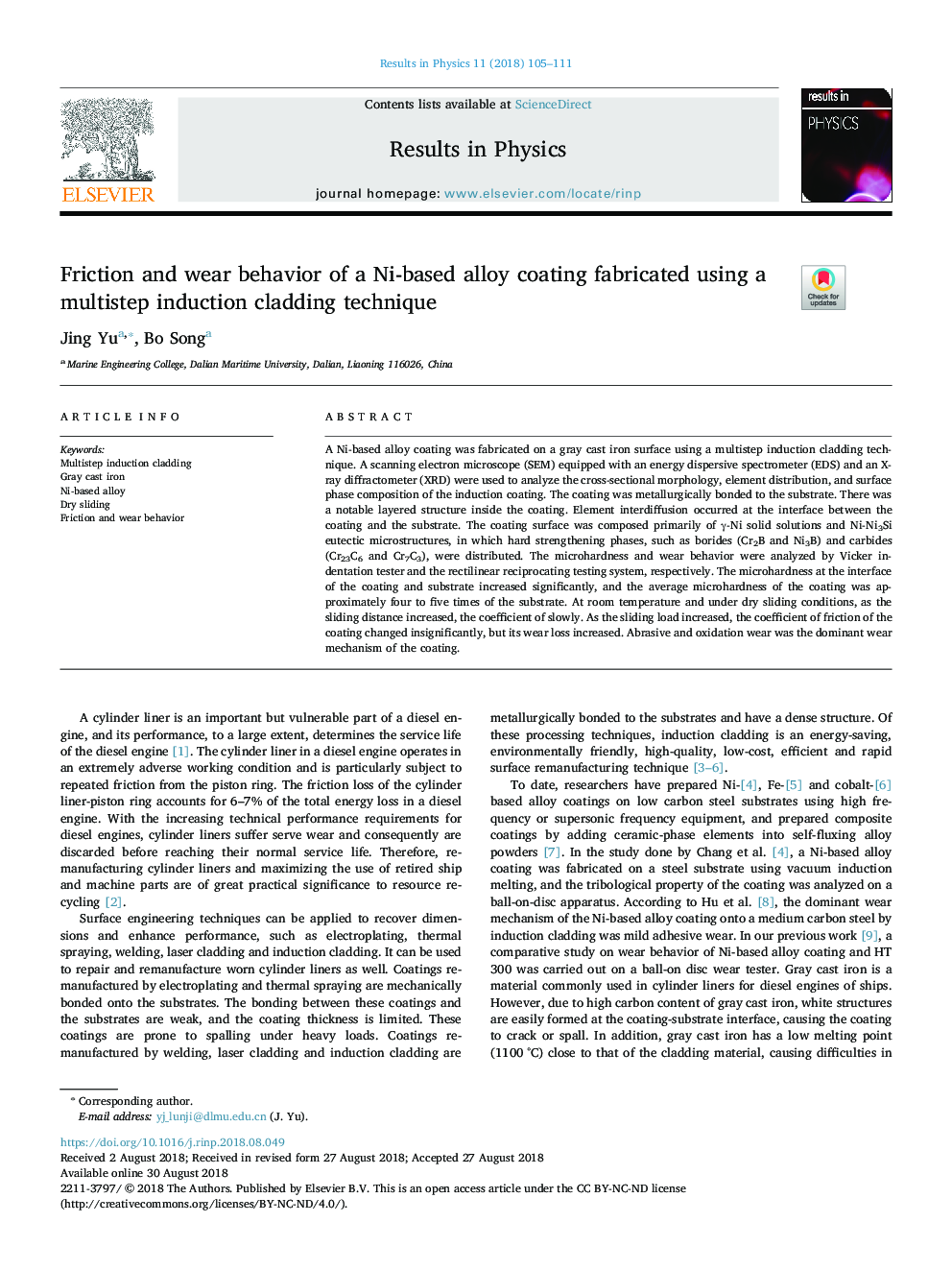| Article ID | Journal | Published Year | Pages | File Type |
|---|---|---|---|---|
| 10136906 | Results in Physics | 2018 | 7 Pages |
Abstract
A Ni-based alloy coating was fabricated on a gray cast iron surface using a multistep induction cladding technique. A scanning electron microscope (SEM) equipped with an energy dispersive spectrometer (EDS) and an X-ray diffractometer (XRD) were used to analyze the cross-sectional morphology, element distribution, and surface phase composition of the induction coating. The coating was metallurgically bonded to the substrate. There was a notable layered structure inside the coating. Element interdiffusion occurred at the interface between the coating and the substrate. The coating surface was composed primarily of γ-Ni solid solutions and Ni-Ni3Si eutectic microstructures, in which hard strengthening phases, such as borides (Cr2B and Ni3B) and carbides (Cr23C6 and Cr7C3), were distributed. The microhardness and wear behavior were analyzed by Vicker indentation tester and the rectilinear reciprocating testing system, respectively. The microhardness at the interface of the coating and substrate increased significantly, and the average microhardness of the coating was approximately four to five times of the substrate. At room temperature and under dry sliding conditions, as the sliding distance increased, the coefficient of slowly. As the sliding load increased, the coefficient of friction of the coating changed insignificantly, but its wear loss increased. Abrasive and oxidation wear was the dominant wear mechanism of the coating.
Related Topics
Physical Sciences and Engineering
Physics and Astronomy
Physics and Astronomy (General)
Authors
Jing Yu, Bo Song,
